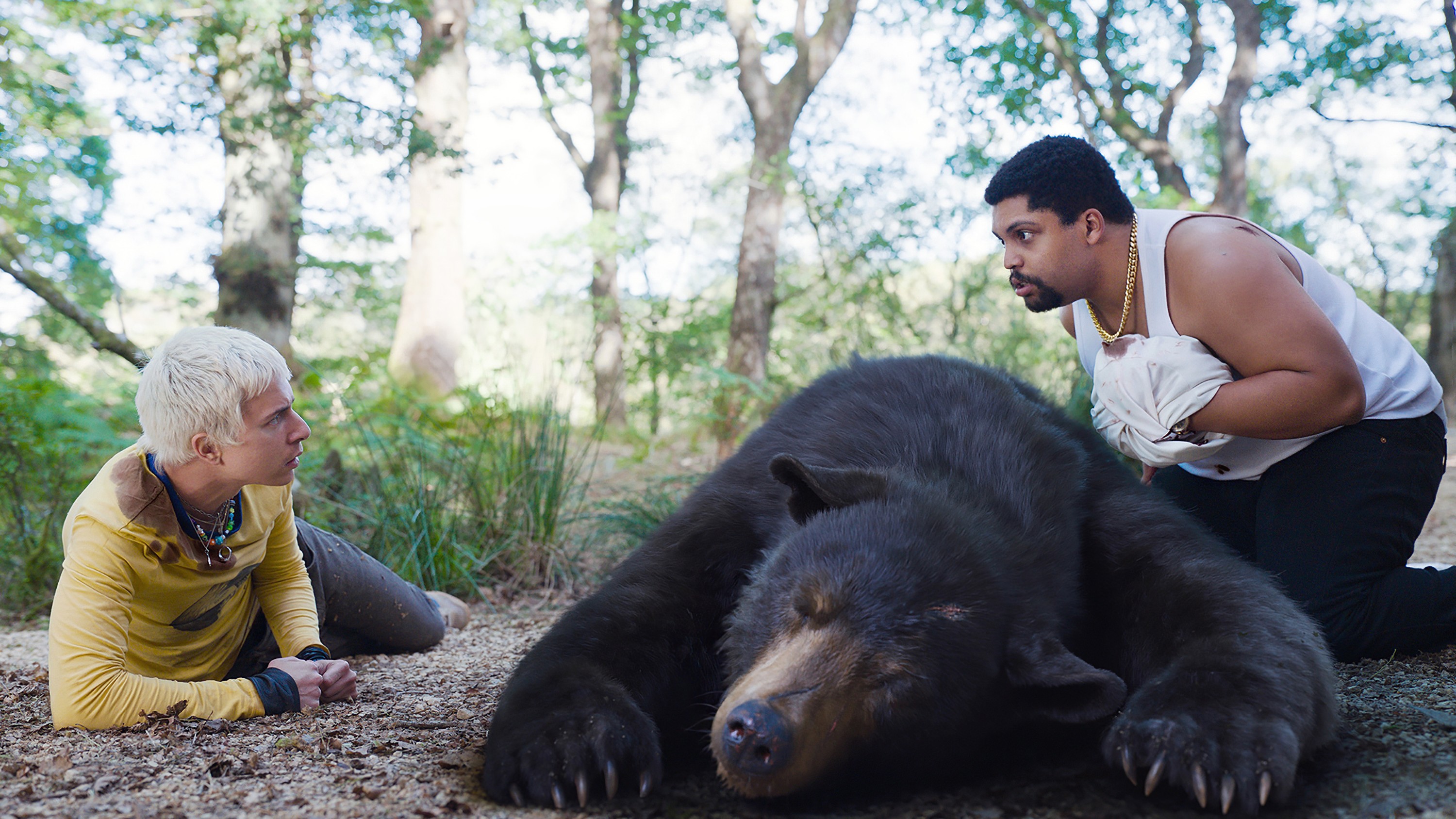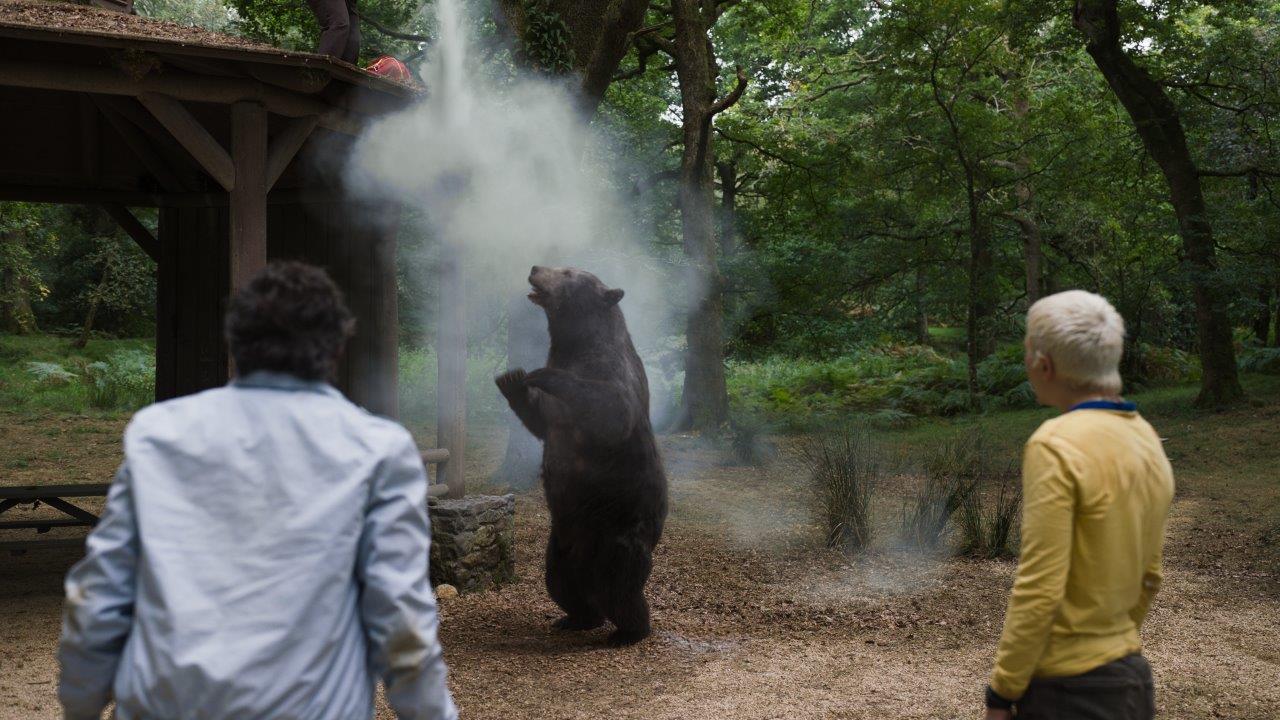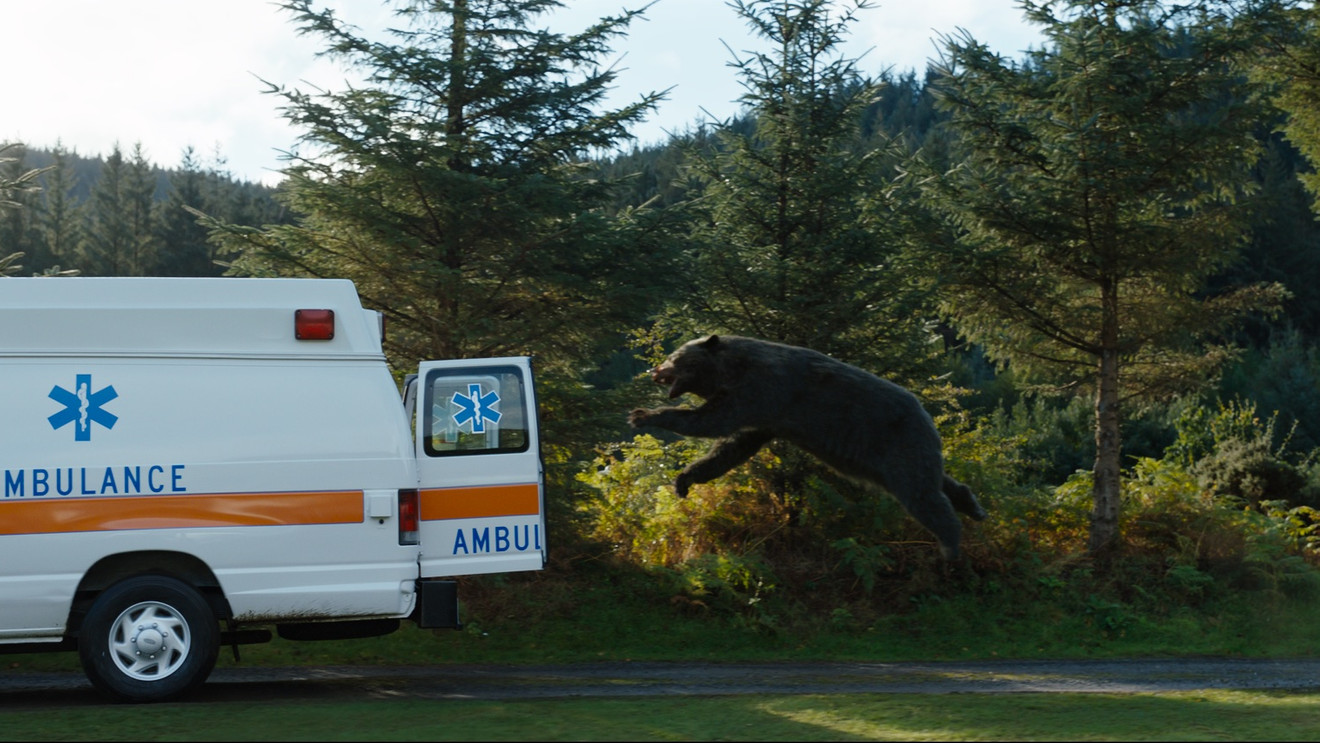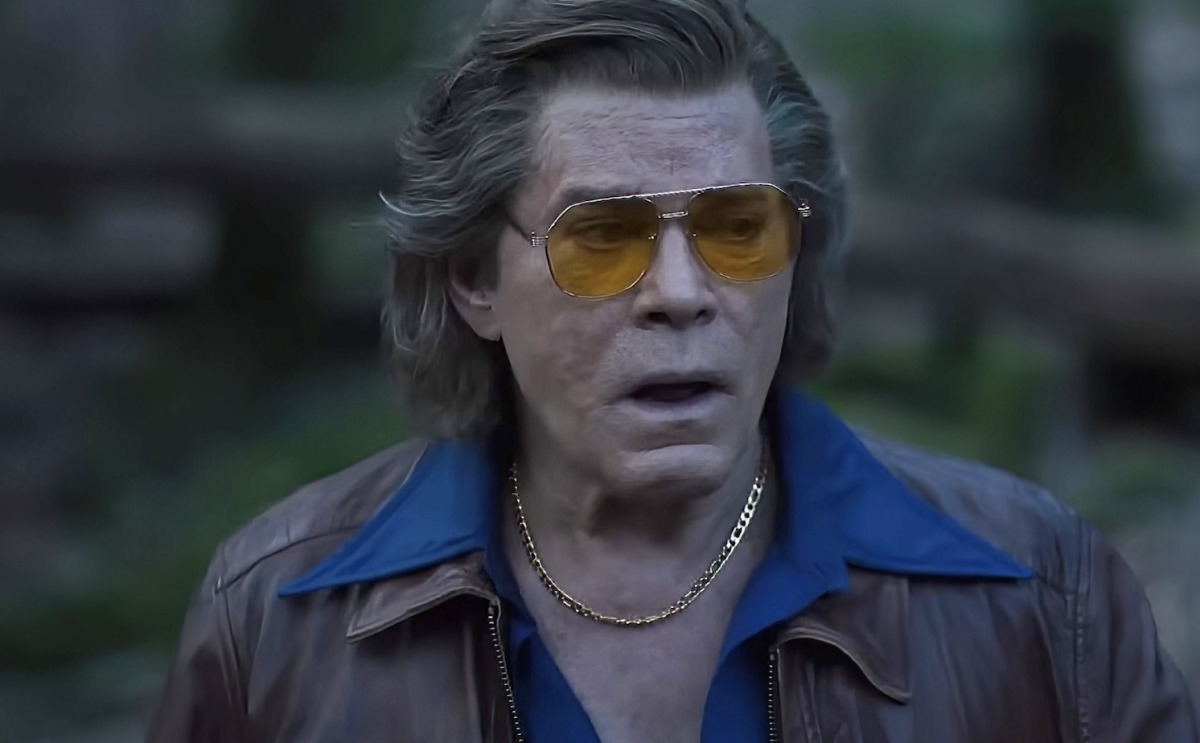The premise of Cocaine Bear escaped out into the zeitgeist long before the movie escaped out into cinemas. Prospective audiences may not have known exactly what they were gettting – something about a real-world bear snorting an ungodly amount of blow – but the sheer promise of bonkers filmmaking was catnip for expectant fans. Boasting a sort of crystalline conceptual purity, akin to something like Snakes on a Plane, Cocaine Bear only had to be outrageous to please us.
Alas, Elizabeth Banks’ film is only so in fits and starts. A couple times it veers toward something delightful, before losing its fleeting grasp of the desired tone. The biggest problem? Hearing an old wives’ tale about a bear that got all coked up and went crazy is a lot more fun than watching it play out. Whatever you imagined a bear might do in that situation is better than what screenwriter Jimmy Warden comes up with here. But really, anything was bound to disappoint us. We had this generalised notion of how funny such a thing would be, but never forced ourselves to really envision it. Cocaine Bear could never measure up to the laugh you got when your friend or co-worker told you about an insane ursine on too many stimulants.
The truth is, the real-life cocaine bear – popularly known as Pablo Eskobear – didn’t do anything very funny at all, that we know of. It ingested way more than it should have and died. No one saw how it behaved or if it suddenly thought it was king of the world. (In the movie, the bear is a she; Wikipedia doesn’t comment on the gender of Pablo Eskobear.)
Banks’ movie needs to be a lot more entertaining than that. It takes off from the real events of September 1985, when drug smuggler Andrew C. Thornton II dumped approximately $2 million of cocaine from his Cessna as it was travelling over the Tennessee woods. The “funniest” event that we know of – if we already consider overdosed bears to be funny – is actually Thornton dying when his parachute didn’t open after he tried to bail from the plane. The movie presents the notion that his parachute was working fine, but after dancing around the plane like Fred Astaire and kicking out his duffel bags as part of his routine, the dipshit conked his head on the roof and lost consciousness before he could pull the cord.
The unseasonable snowfall blankets a handful of characters. The first two who discover it are children, Dee Dee (Brooklynn Prince) and Henry (Christian Convery), who think you’re supposed to shove about a tablespoon of it directly into your mouth. Keri Russell plays Dee Dee’s mother, in hot pursuit of her truant child. The people actually looking for the cocaine are on both sides of the law, with a detective (Isiah Whitlock Jr.) tracking it following the discovery of Thornton’s corpse, and a couple flunkies (O’Shea Jackson Jr. and Alden Ehrenreich) of a mid-level drug dealer (Ray Liotta), who is also the father to Ehrenreich’s character, trying to reacquire the lost cargo for their unseen boss. Then there’s the hapless trio of hick criminals who also happen across it, not to mention a pair of even more hapless forest rangers (Margo Martindale and Jesse Tyler Ferguson).
The characters get themselves in and out of trouble – some do, anyway – without many of the scenes really registering. Or if they register, they do so in the wrong ways. For example, the rangers, Martindale and Ferguson – he’s technically not a park ranger, but park ranger adjacent – are playing caricatures who belong more to a hypothetical Cocaine Bear sketch on Saturday Night Live. Her inexcusable usage of the gun she inexplicably holsters is particularly cringe-worthy.
Interestingly, the two scenes that work best do so for entirely different reasons, meaning it’s not one single tone that eludes Banks for most of the movie. One is played pretty much for pure comedy, while the other is the film’s most gruesome sequence. The former involves a sort of Mexican standoff between the law and the lawless in and around a gazebo, which the bear happens upon when she’s crashing, leaving her more likely to loll about than tear someone’s face off. Jackson and Ehrenreich, consistently the film’s best resources, really shine in this scene. The other scene finds the bear particularly keyed up, and her full-speed pursuit of a fleeing ambulance is played for maximum gore. It’s the closest the movie comes to what it should be doing throughout: making us laugh and grimace in equal measure.
Cocaine Bear’s weaknesses are tied pretty directly to this bear. The digital effects are wobbly and inconsistent, a far cry from the last digital bear we consumed in popular culture, in 2015’s The Revenant. Cocaine Bear didn’t have the budget of that film but it might have still managed something less unintentionally humorous.
At a character level, we don’t get to know this bear – it never has any selfhood to speak of, but only operates as a threat to the humans. Would cocaine really turn a bear into a raging, bloodthirsty psychopath? We don’t know, but the one we get here, only occasionally leavened by humour, doesn’t specifically seem to be acting out the traits of someone who’s had one too many bumps. In fact, she isn’t very much different from any uncontrollable monster in any other monster movie. As discussed previously, the most distinctive thing about Cocaine Bear was always going to be the idea itself, before specific choices took the shine off it.
The opportunity for something different is really what drew us to Cocaine Bear – especially with Elizabeth Banks, known originally as an actress, at the helm. Her directorial debut was the sequel to Pitch Perfect, and then she directed the underrated 2019 reboot of Charlie’s Angels. You can squint and see Cocaine Bear as a blending of those sensibilities, and the most memorable characters she’s played have always had a screw loose. It could have really worked.
Cocaine Bear doesn’t not work, not entirely, but it has too few sudden highs, and crashes down to earth too often. What may be saddest is that it squanders potentially its best asset, Ray Liotta, who plays just the sort of squirrelly asshole that has been his bread and butter the past couple decades. To fans eager to see him on screen one last time, his presence was the biggest selling point next to the coked up bear. You’ll be thankful for that presence, but you’ll wish the writing had supported him better – a common theme throughout. Liotta has four more posthumous releases to potentially savour, but none with the promise Cocaine Bear had.
Cocaine Bear is currently playing in cinemas.



